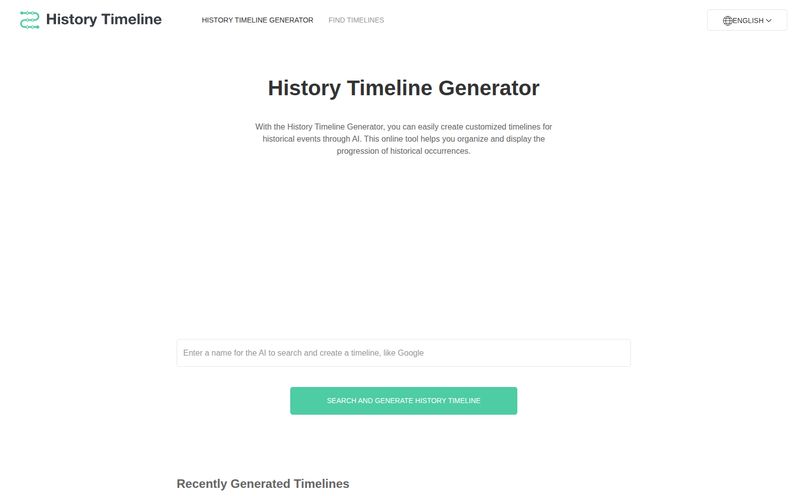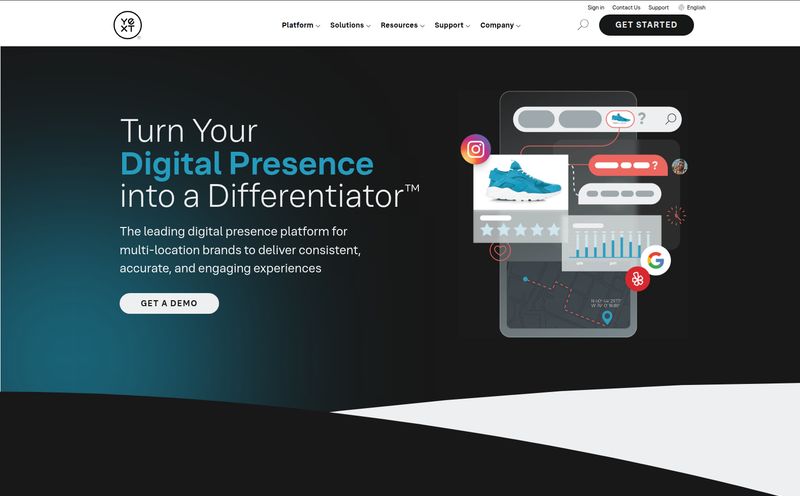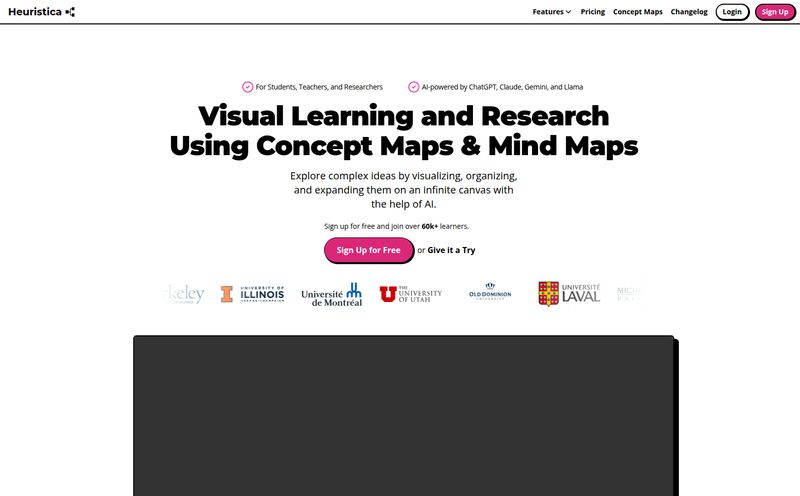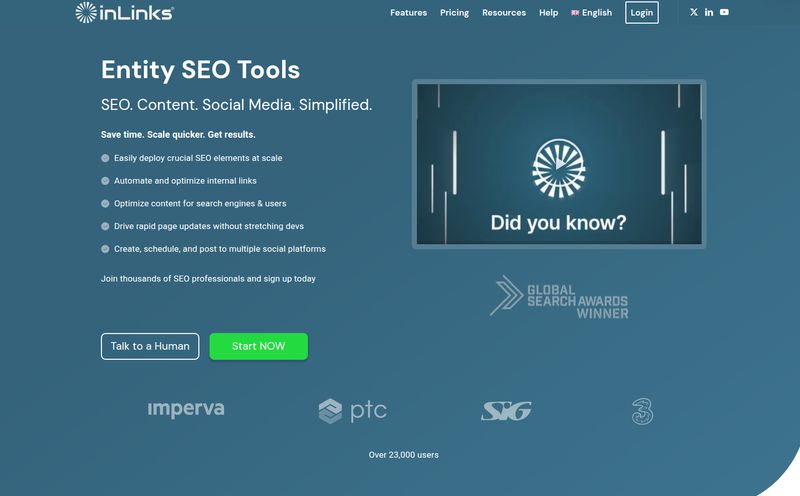I’ve been in the SEO and digital marketing game for a long, long time. And if there's one thing that’s been a constant, nagging pain in the side, it’s creating diagrams. Flowcharts, user journey maps, system architecture diagrams… you name it. For years, it meant wrestling with clunky software that felt like it was designed in the 90s, where moving one little box would send the entire canvas into chaos. It's a special kind of creative torture.
So, you can imagine my excitement when I stumbled upon FlowCraft. The homepage hits you with a beautiful, clean design and a powerful promise: “Describe It, We’ll Illustrate It.”
Just… tell the computer what you want, and it draws it for you? Sign me up. This is the stuff we dreamed about while spending hours aligning arrows and text boxes. A tool that lets you create everything from mind maps to complex sequence diagrams with just a few lines of text is, frankly, a game-changer. Or at least, it promises to be.
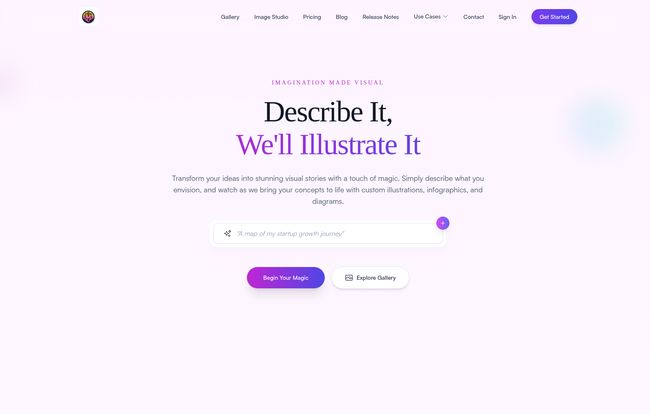
Visit FlowCraft
So, What Exactly is FlowCraft?
At its heart, FlowCraft is an AI-powered diagramming assistant. Think of it less like a blank canvas and more like having a junior graphic designer on call 24/7. You give it a simple prompt—say, “Create a flowchart for a customer checkout process on an e-commerce site”—and the AI gets to work, generating a visual representation. Its a fascinating idea that aims to take the grunt work out of visualization.
The platform boasts support for a whole slew of diagram types that are my bread and butter:
- Flowcharts
- Sequence Diagrams
- User Journey Maps
- Mind Maps
- Knowledge Graphs
- Even simple Whiteboard diagrams
The idea is to democratize diagramming. You shouldn't need a degree in graphic design or a certification in a specific piece of software to map out a process. If you can write a sentence, you should be able to create a diagram. I’m totally on board with that philosophy.
The Good, The Bad, and The Big Question Mark
Every tool has its ups and downs, and from what I can gather, FlowCraft is no different. Let's break down what got me excited and what gives me pause.
The Things I'm Genuinely Excited About
First off, the ease of use is the main selling point. The very concept removes the steepest part of the learning curve associated with traditional tools. This opens up process visualization to marketers, project managers, students, and startup founders who are long on ideas but short on time.
The ability to collaborate by sharing diagrams is also a huge plus. Being able to quickly generate a user journey map with AI and then fire it off to your team for feedback without exporting, emailing, and re-importing is how modern teams should work. It cuts down on friction, which is always a win in my book.
And of course, the sheer variety of supported diagrams is impressive. It’s not just a one-trick pony for flowcharts. User journey and mind maps are critical for my work in SEO and content strategy, so seeing them included tells me the developers understand the needs of a broad professional audience.
And Now for the Elephant in the Room...
So, here’s the catch. As I was getting ready to dive in and start crafting, I hit a snag. A big one. The service is currently paused. According to the info I dug up, it's for “API optimization.”
Now, in my experience, “API optimization” can mean a lot of things. Often, it's code for “this is costing us a fortune to run.” Many of these new, flashy AI tools are built on top of powerful but expensive models from companies like OpenAI. When a service gets popular, the API bills can skyrocket unexpectedly. The mention of “potential API cost-related issues” seems to confirm my suspicion. It’s a common growing pain for AI startups, but it’s a bummer for those of us eager to try it out.
The Great Pricing Mystery
This brings me to my favorite part of the investigation. The FlowCraft site has a page that boldly proclaims, “Simple, transparent pricing.” You click on it, expecting to see a few tiers—maybe a free plan, a pro plan, a team plan. Standard SaaS stuff.
But what do you find? Nothing. An elegant, minimalist, and completely empty page. It’s a bold strategy, I’ll give them that. The most transparent pricing is no pricing at all, I guess? It’s a bit funny, and it tells a story of a product that was likely rushed to market with a “we’ll figure it out later” attitude. We’ve all been there, right?
I genuinely hope they figure it out, because a tool like this, priced reasonably, could be an instant subscribe for me and my team.
Who Should Keep an Eye on FlowCraft?
Even in its paused state, I can see exactly who would benefit from FlowCraft once it’s back online. Project managers could instantly map out project phases. UX/UI designers could generate user flow diagrams in seconds, saving precious time for the more complex design work. Developers could visualize system architecture without leaving their keyboard. And for digital marketers like me, quickly creating visual content for strategy presentations or blog posts would be incredible.
Basically, if you’ve ever said, “I just need a quick diagram to explain this,” you’re the target audience.
Some Alternatives to Use While We Wait
Since you can't use FlowCraft right now, you might need something to fill the gap. Here are a few solid choices, from traditional to AI-powered:
| Tool | What it's good for | AI Features? |
|---|---|---|
| Miro | The king of collaborative whiteboards. Great for brainstorming, workshops, and complex projects. | Yes, they've been integrating AI for mind mapping, diagramming, and content generation. |
| Lucidchart | A powerful, dedicated diagramming tool. More traditional, but extremely robust and reliable for professional charts. | Yes, they also have AI features to help generate and organize diagrams. |
| Whimsical | Combines documents, whiteboards, and flowcharts. Has a friendly feel and a great AI mind-mapping feature. | Yes, their AI integration is a core part of the recent experience. |
These tools can definitely get the job done, though none of them have quite the simple “text-to-diagram” core promise that made FlowCraft so appealing.
Frequently Asked Questions about FlowCraft
What is FlowCraft supposed to do?
- FlowCraft is an AI tool designed to automatically create diagrams like flowcharts, mind maps, and user journey maps from simple text descriptions you provide.
What kinds of diagrams can you make with it?
- It's designed to support a wide range, including flowcharts, sequence diagrams, process maps, user journey maps, mind maps, and knowledge graphs.
Is FlowCraft good for teams?
- It was built with collaboration in mind, featuring diagram sharing capabilities so teams can work together on the visuals created by the AI.
Why is FlowCraft unavailable right now?
- The service is temporarily paused for what they call “API optimization.” This likely relates to high operational costs or technical challenges with the underlying AI models, a common issue for new AI startups.
How much does FlowCraft cost?
- That’s the million-dollar question! Their website mentions “simple, transparent pricing” but doesn’t currently list any prices or plans. It's a bit of a mystery for now.
Is there a FlowCraft free trial?
- Given the pricing information is unavailable and the service is paused, there are no details on a free trial. We'll have to wait and see what they offer when they relaunch.
Final Thoughts: A Promising Idea on Hold
So, what’s the verdict on FlowCraft? It’s a brilliant idea wrapped in a bit of a mystery. It represents a trend I’m incredibly excited about: AI that removes tedious, non-creative work and lets us focus on strategy and ideas. The thought of never having to manually adjust another connector line in a flowchart... it's beautiful.
The current pause is a setback, for sure. But I’m choosing to be optimistic. It could mean the team is taking the time to build a more sustainable, robust platform. If they can solve their API and pricing puzzle, FlowCraft could easily become an essential tool in my arsenal.
I've bookmarked their site, and I’ll be keeping a close eye on it. You probably should too. This could be one of those tools we look back on in five years and say, “Remember when we had to draw our own diagrams? How did we even survive?”
Reference and Sources
- Miro - https://miro.com/
- Lucidchart - https://www.lucidchart.com/
- Whimsical - https://whimsical.com/
